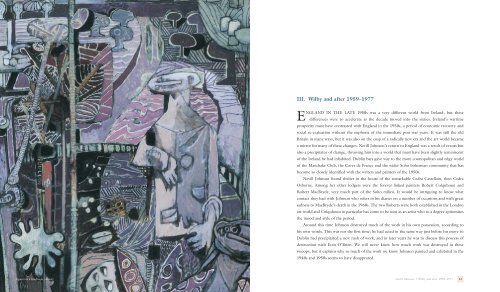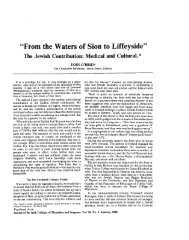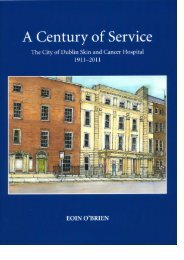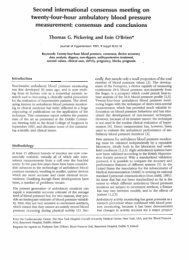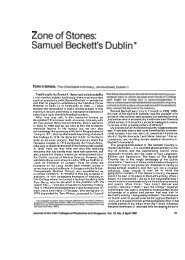Nevill Johnson: Paint the smell of grass - Eoin O'Brien
Nevill Johnson: Paint the smell of grass - Eoin O'Brien
Nevill Johnson: Paint the smell of grass - Eoin O'Brien
You also want an ePaper? Increase the reach of your titles
YUMPU automatically turns print PDFs into web optimized ePapers that Google loves.
Figures in a landscape 60 (detail)<br />
<strong>Nevill</strong> <strong>Johnson</strong> l <strong>Paint</strong> <strong>the</strong> Smell <strong>of</strong> Grass<br />
III. Wilby and after 1959–1977<br />
ENGLAND IN THE LATE 1950s was a very different world from Ireland, but <strong>the</strong>se<br />
differences were to accelerate as <strong>the</strong> decade moved into <strong>the</strong> sixties. Ireland’s wartime<br />
prosperity must have contrasted with England in <strong>the</strong> 1950s, a period <strong>of</strong> economic recovery and<br />
social re-evaluation without <strong>the</strong> euphoria <strong>of</strong> <strong>the</strong> immediate post-war years. It was still <strong>the</strong> old<br />
Britain in many ways, but it was also on <strong>the</strong> cusp <strong>of</strong> a radically new era and <strong>the</strong> art world became<br />
a mirror for many <strong>of</strong> <strong>the</strong>se changes. <strong>Nevill</strong> <strong>Johnson</strong>’s return to England was a result <strong>of</strong> events but<br />
also a precipitator <strong>of</strong> change, throwing him into a world that must have been slightly reminiscent<br />
<strong>of</strong> <strong>the</strong> Ireland he had inhabited. Dublin bars gave way to <strong>the</strong> more cosmopolitan and edgy world<br />
<strong>of</strong> <strong>the</strong> Mandrake Club, <strong>the</strong> Caves de France and <strong>the</strong> wider Soho bohemian community that has<br />
become so closely identified with <strong>the</strong> writers and painters <strong>of</strong> <strong>the</strong> 1950s.<br />
<strong>Nevill</strong> <strong>Johnson</strong> found shelter in <strong>the</strong> house <strong>of</strong> <strong>the</strong> remarkable Cedra Castellain, <strong>the</strong>n Cedra<br />
Osborne. Among her o<strong>the</strong>r lodgers were <strong>the</strong> forever linked painters Robert Colquhoun and<br />
Robert MacBryde, very much part <strong>of</strong> <strong>the</strong> Soho milieu. It would be intriguing to know what<br />
contact <strong>the</strong>y had with <strong>Johnson</strong> who refers in his diaries on a number <strong>of</strong> occasions and with great<br />
sadness to MacBryde’s death in <strong>the</strong> 1960s. The two Roberts were both established in <strong>the</strong> London<br />
art world and Colquhoun in particular has come to be seen as an artist who to a degree epitomises<br />
<strong>the</strong> mood and style <strong>of</strong> <strong>the</strong> period.<br />
Around this time <strong>Johnson</strong> destroyed much <strong>of</strong> <strong>the</strong> work in his own possession, according to<br />
his own words. This was not <strong>the</strong> first time; he had acted in <strong>the</strong> same way just before his move to<br />
Dublin had precipitated a new rush <strong>of</strong> work, and in later years he was to discuss this process <strong>of</strong><br />
destruction with <strong>Eoin</strong> O’Brien. We will never know how much work was destroyed in <strong>the</strong>se<br />
swoops, but it explains why so much <strong>of</strong> <strong>the</strong> work we know <strong>Johnson</strong> painted and exhibited in <strong>the</strong><br />
1940s and 1950s seems to have disappeared.<br />
<strong>Nevill</strong> <strong>Johnson</strong> l Wilby and after 1959–1977 61


